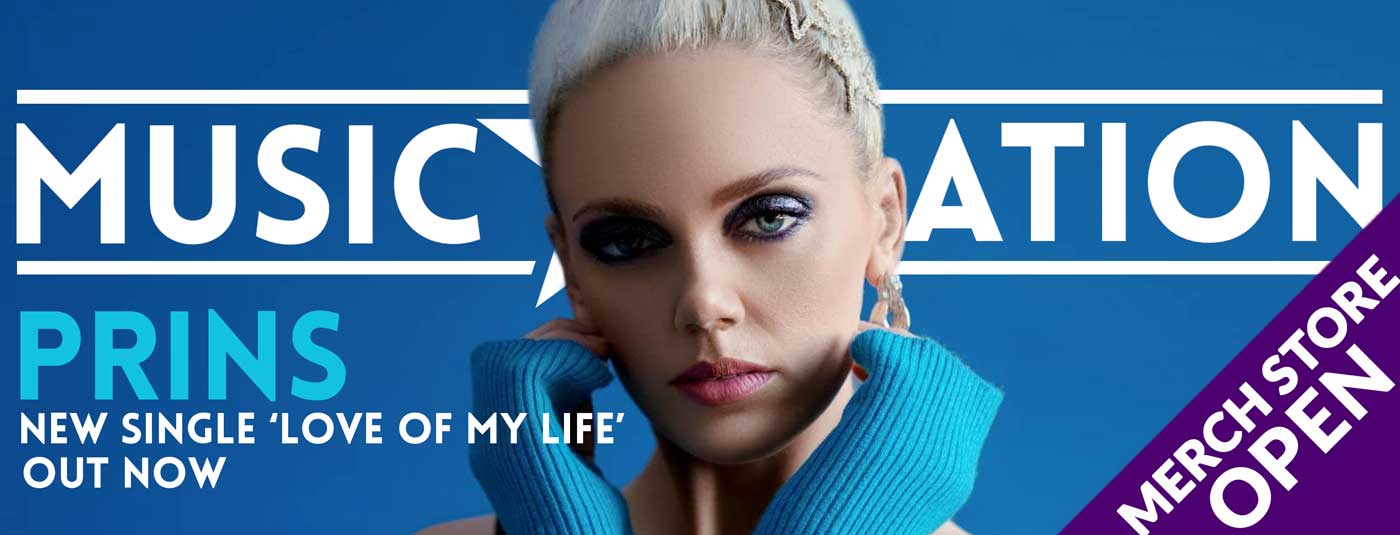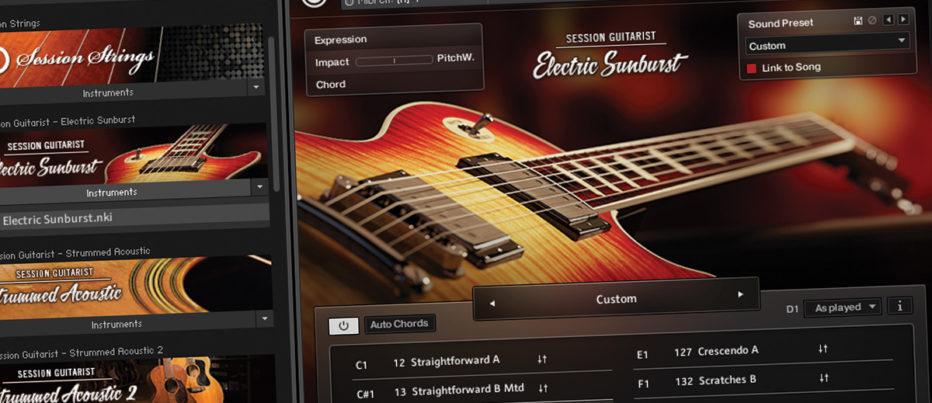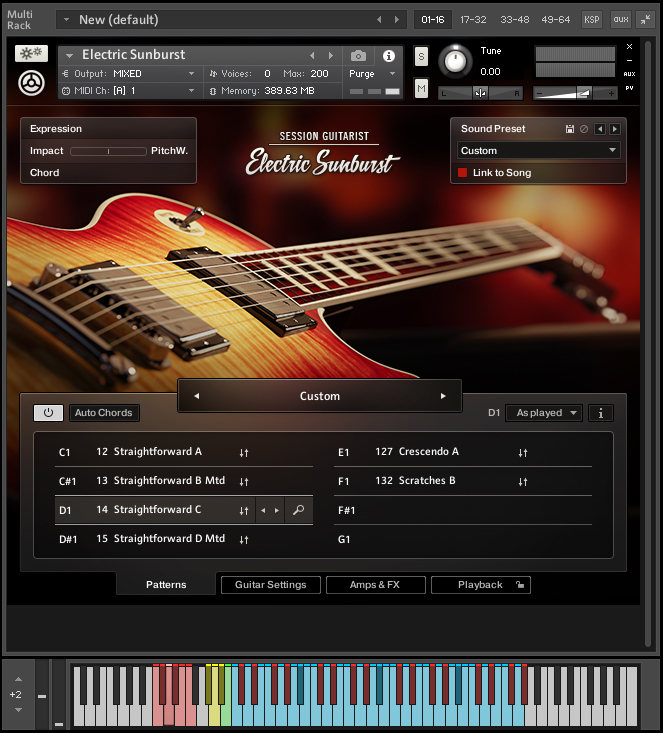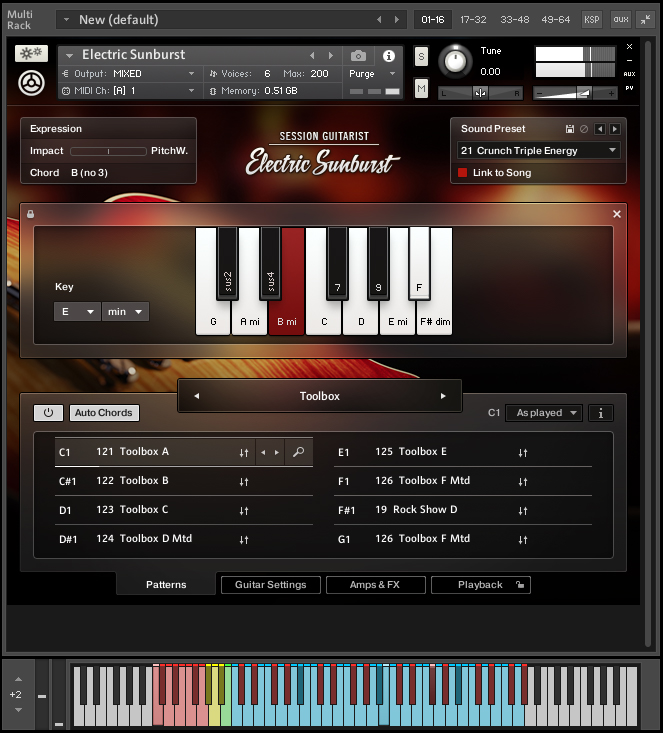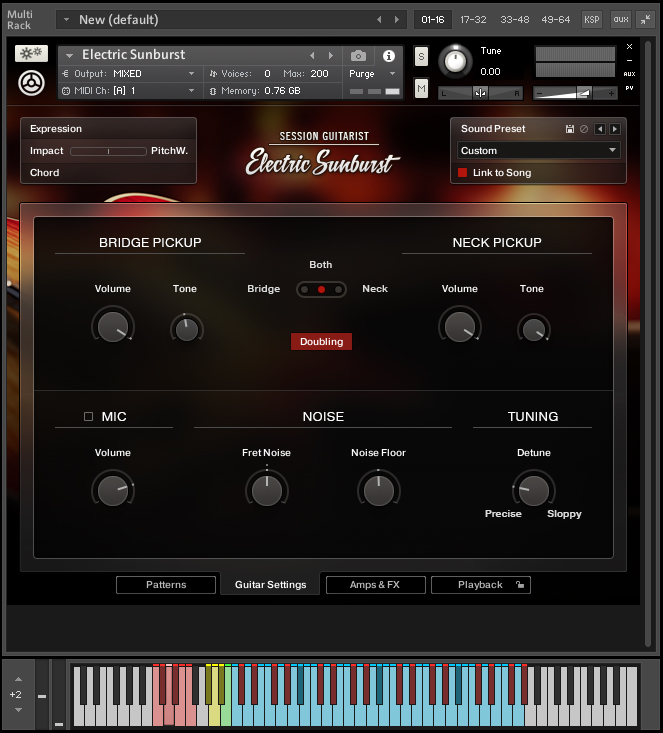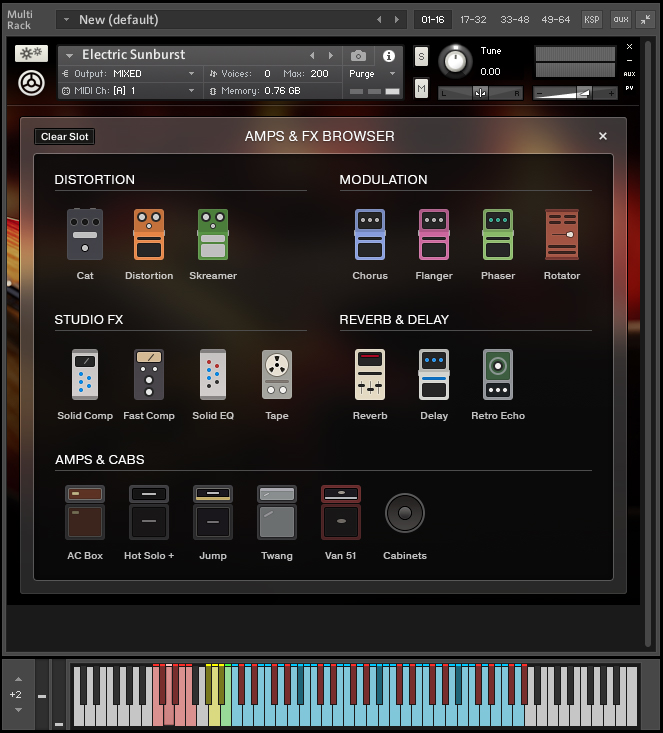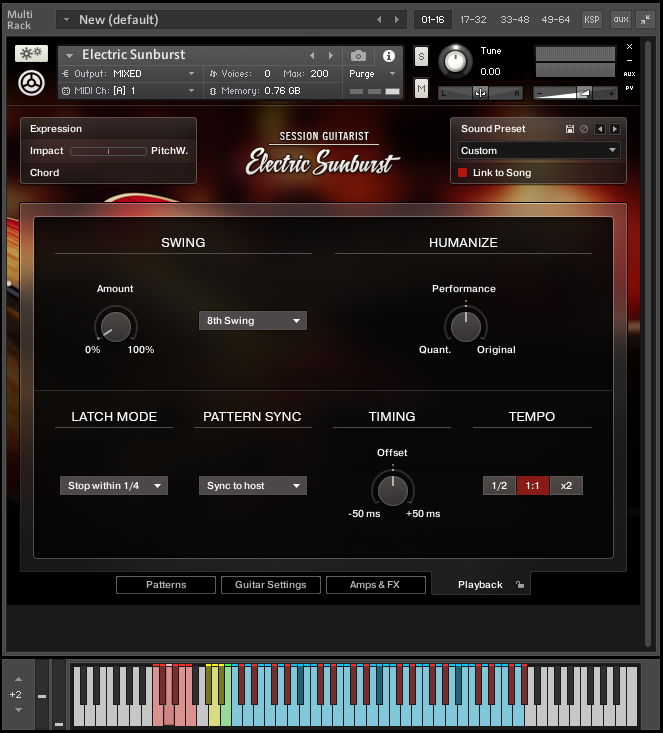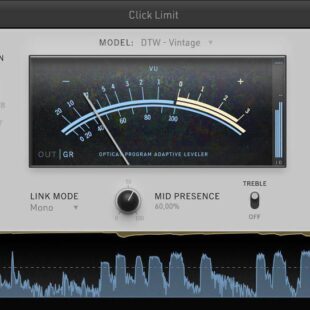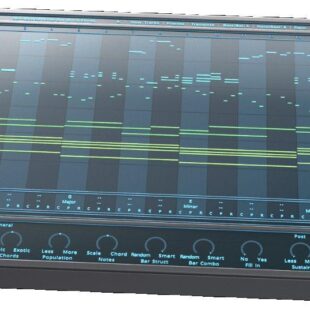NATIVE INSTRUMENTS ELECTRIC SUNBURST – TRUE BLUE
Hello and welcome to Studiowise reviews. This time we’re looking at the third in the Session Guitarist series from Native Instruments called Electric Sunburst. The company produced outstanding results with the previous libraries, and this first electric guitar variation promises to deliver much of the same experience with more flexibility.
Native Instruments have a lot to live up to when releasing new products. Not only will the fan base expect the highest quality, but the instruments must also be fully compatible with the range of NKS keyboards and controllers, plus they should represent the pinnacle of excellence on the Kontakt platform, after all, they are the company that developed it.
I adored the first two acoustic variants of the series and can’t wait to get stuck into this edition. Let’s get rolling.
Overview
Session Guitarist: Electric Sunburst is an expansion library for Native Instruments’ own Kontakt sample player platform and comes as a single NKI multi with 31 presets “songs” and an extensive effect library.
The library features a six-string Gibson Les Paul style guitar with 154 unique patterns and realistic strumming and picking style articulations, a full amp, cabinet and effects section, as well as full control over the guitar pickup and tuning.
Fully installed the library weighs in at just under 5.5 gigabytes, and though we couldn’t find any official minimum specs, the library ran flawlessly on our test machine (Windows 10 i5 6500 with 16GB RAM).
The instrument operates in nearly the exact same manner as the previous acoustic titles, so those already invested in the series will have no trouble jumping straight into this.
Downloading and installing is an absolute breeze with the Native Access software manager.
Road Test
Loading patches is slightly different from normal libraries in that you only have a single instrument to load, which is separated out by internal “Songs”, and then again by up to 8 articulation patterns.
The idea is to provide a single playable guitar with multiple styles applied with articulation keystrokes. It’s a little tricky to commit all the available controls to memory as this instrument and a little forward planning is required to set up the best patterns for your performance.
Running over the instruments controls, I’ll jump ahead to the easy parts to understand.
The guitar settings tab enables fairly deep modifications of the source tone. Each pickup was recorded with a Universal Audio Solo 620 preamp mostly dry which allows for lots of versatility with mixing. You can choose between bridge, neck or both pickups and engage doubling which plays two guitars giving you a nice wide signal.
A third acoustic mic was added which can be mixed or disabled if you need it from the settings page. This adds a nice mix of air and pick noise to the signal.
The amp and FX tab contains an extensive selection of basic foot pedals and amp combos, including 5 complete rig presets. This is all well laid out and any guitarist will have no problem dialling in a suitable tone for their project.
The final playback tab contains pattern performance controls for adding swing, timing and tempo changes.
Back to the main pattern player, the instrument requires you to choose from one of 31 premade songs. These are best thought of as starting points, so choose a song that best reflects the type of music you’re writing. They are called songs because you are presented with 8 preset groves that potentially cover most play styles in a specific song genre. It’s not particularly accurate, but as mentioned a good starting point.
The 8 individual patterns are controllable from the red zone on your keyboard and contain a preset MIDI phrase. This phrase can be played with either single note, chords or with the auto chords player. All options automatically flow into the next note change, so there are no chopped notes or weird glitches when changing.
The auto chord option is particularly good for experimenting with different phrases when songwriting. This allows you to choose a root key and then choose from an octave of relevant chords. I often used this to try different arrangements just to see which sat better, a very handy feature.
Each of the phrases can be swapped out for ones from other songs, but unfortunately, you can’t create your own scratch-built grooves. The included browser has a rhythm search function, but I found it a little cursory as the search results appeared to be more random than the groove I inserted.
The sound
While no mention of the actual guitar used anywhere, by the looks of the photos this is a Gibson Les Paul with dual humbucker pickups, so the tone is suitably warm and clear.
Fortunately, we happen to have a vintage Gibson Les Paul in the studio while we were making this review. Our model was an original 1968 model, so I was expecting some rather large tonal differences. Oddly, it sounds remarkably close. I think the major contributor to the tone difference was the state of the strings (our studio guitar is in dire need of a new set).
Though our guitar is pretty well set up, the plugin misses a lot of the string and fret buzz and ever so slight intonation errors present in the older instruments. Electric Sunburst doesn’t sound fake or “computer” perfect, but even with the fret noise control up full, some detuning and maximum humanise it still sounds too perfect next to the real thing.
Don’t get me wrong, Electric Sunburst sounds amazing, but the most obvious difference between this and the real instrument is that the computer plays every note perfectly, and every pluck is timed correctly and in tune right on the money. The human-played instrument has errors, slight fret buzz, some timing irregularities etc.
Playing through a Marshall head and 1960 cabinet with all the settings as close to the plugin as I could get, other than the obvious acoustic differences between a large 4-speaker guitar cabinet and my smaller 8″ studio monitor speakers, the basic tones is too close to call. This is certainly a difference – but it’s just different, not better or worse.
In regard to the included amp and cabinet emulations, the plugin version has a habit of breaking up faster than the hardware, depending on the amp model used. The emulated marshal certainly wants to fizz a lot more than our real amp. There is no mention of the model of the amp head or cabinet used, so that’s a totally subject thing really.
But all in all, Electric Sunburst is bang-on authentic, if slightly too polished and shiny for my taste.
In Action
Clever software and well-recorded samples are one thing, but how does Electric Sunburst stand up to a full recording session?
We tested Electric Sunburst with three fairly rocky mix sessions. Mostly we found creating a usable amp tone fairly easy, though I opted to use Guitar Rig 5 and IK Multimedia’s Amplitube for more flexibility in the end on all three mixes, and mostly because I prefer a dual-amp setup as opposed to the built-in dual-guitar doubler.
The results were all pretty conclusive, Electric Sunburst sat in very well with all the mixes, and if I’m honest, probably more so than the original guitars. The flexibility of altering amp and guitar tone settings after the fact has massive benefits over recording live guitar where you can’t simply go back in time to mess with the amp settings or move a microphone around.
It is much easier, of course, to fix bum notes and test different chordal arrangments, even swap out complete amp setups as you, please.
One particular session was a symphonic metal type prog rock track, and Electric Sunburst performed well even without the extended low range of the original baritone guitar. This is one area though perhaps the library will struggle. Some metal styles require a distinctive fast and low register playstyle that is not easily achievable with Electric Sunburst.
Though my initial presumption was this would be orientated towards EDM or pop, perhaps optimised for Maschine or similar MIDI controllers, my experiences have been very positive using this more as a direct replacement for rock guitar lines with full band recordings. I think you could probably mangle any old sample to sound good with EDM but to convincingly replace a real guitar takes some fairly clever software.
Of course, this is purely a rhythm guitar instrument, there is very little scope for soloing right now. Perhaps future editions of the series might feature better implementation for shredding, but for right now I think Electric Sunburst performs the rhythm role well and that’s good enough.
Conclusion
The third title in the series from Native Instruments has proven once again the company has some very skilled people involved behind the scene in making these instruments.
The instrument is very playable with a great selection of amp simulators and effects. There is a tendency for everything to sound very polished, which may or may not be a good thing, depending on your project.
No option for solo lead breaks, but to be fair that would require a completely different set of controls and workflow. Electric Sunburst just focuses on the basic rhythm grooves. The included articulations are better suited towards pop and indie rock, I would like to see a specific metal instrument, particularly with the extended lower baritone range.
For the first time, I can comfortably say there is a sampled electric guitar instrument now that sounds equal, if not somewhat better than the original. While the recorded samples are extremely close to the actual real-world guitar, the editability given by the software is the true hero of the day, allowing songwriters to create with more versatility than ever before.
Full details can be found on Native Instruments’ main page right here.

Like the review? Shout us a cup of coffee!
